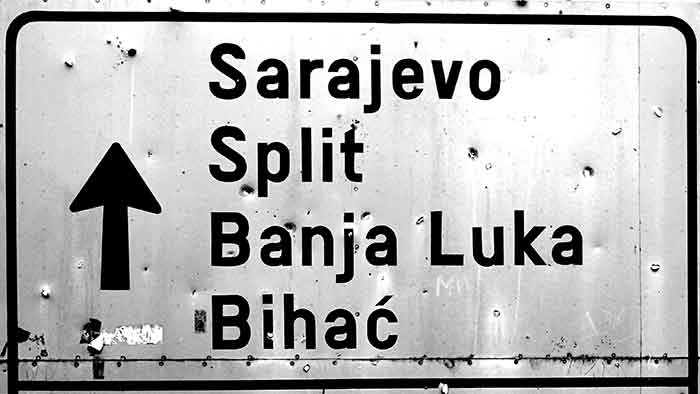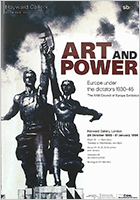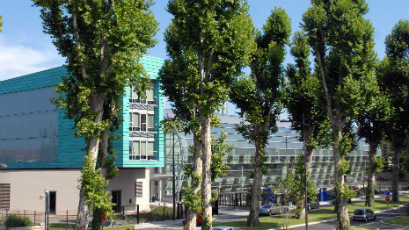Agrégateur de contenus

The day I was framed and spent four years doing time: the Framework Convention for the Protection of National Minorities
1998-2004
Mark Neville

Ever been desperate to change your job?
‘I want to change jobs,’ I told the Director of Human Rights in the autumn of 2000, ‘anything but the Framework Convention for the Protection of persons belonging to National Minorities,’ I added.
Two months later I got the call and sat down on the sofa in the Director’s office, with the line of windows in the human rights building disappearing northwards.
The Director tried to smile but it came out as a grimace. ‘I remember what you said about the Framework Convention,’ he said, ‘but…’
My heart dropped and I wished I had taken the training course on ‘Learning to say no’, because by the time I had left his office I had agreed to a new job.
I spent the Christmas break thinking about the prospects of working with a team that might not like a newcomer, a Convention named ‘a framework, without a frame’, a monitoring mechanism, not just in one, but two parts, with an Advisory Committee chugging into life, and a procedure still to be imagined before the Committee of Ministers - all with a scare-crow staff. If this was not enough, there was a funded but unstaffed co-operation programme, and a blessing from hell, 2 million Swiss Franc voluntary contribution, with a two-year decapitation date.
Bingo, I had drawn the short straw and the Convention had drawn me, an ignoramus on minority rights. I wasn’t sure who to feel the most sorry for.
Now I knew the European Convention on Human Rights off by heart, but if you had asked me to cite an Article from the Framework Convention, I would have stared at you like a rabbit caught in headlights.
Over the New Year holiday period I started to learn the provisions of the Convention as I walked round the edge of the park with a cheat list in my hand. I had no idea what I was learning; I was no better than a parrot.
Back at home I began reading academic articles to understand what it was all about, and nowhere could I find a definition of a national minority. There was nothing, nada, nicks, nimic, nič …
The best I could find was something said by the OSCE’s High Commissioner on National Minorities, former member of the Parliamentary Assembly, Mr Max van der Stoel. He gave the definition, ‘I know a minority when I see one’. That was great, but I could hardly carry the Commissioner around with me and ask him, when necessary, ‘is that a minority?’
So, eventually I sat in my new office with a smart black leather sofa, a glass coffee table, one window too many and three staff too little.
I didn’t have to worry, because soon some people arrived and moved the wall to take a window away, and with it the leather sofa and the glass coffee table. Over fifteen years later, I still haven’t reached the level of entitlement to get that sofa and coffee table back, and time is running out.
For a day or two I could afford the luxury of a clear desk while I started to read the first decisions of the Advisory Committee that had come out. I felt a first tingle of pleasure realising it was new territory, and not just for me. The team were really ‘spiky’, or in Council of Europe speak, ‘clever, committed and competent’.
I set about researching for my first country reports on the United Kingdom, Ireland and Albania, sensibly leaving Russia, Romania and Hungary to my colleagues who were more legally learned, politically astute and linguistically talented.
Little did I realise that there were no easy countries where national minorities were concerned, and each brought its own challenges, as I was soon to find out: one country sucked me into a high stakes peace process, another landed me in hospital, and the third confined me to a VIP room with beauty contestants.
From reading the Convention I knew the monitoring procedure under the Framework Convention started with a report submitted by the Government, with the possibility of shadow reports prepared by national minorities and other interested groups. I opened the UK file and found out the UK Government had fudged the issue of national minorities, taking the easy way out. Rather than attempting to define their national minorities afresh. They had seized, lock stock and barrel, the definition of “race” from the Race Relations Act and applied the Convention accordingly.
This was certain to create a major problem with the Advisory Committee, a group of 18 independent experts set up to monitor the Framework Convention. They were going to frown and tell me there was only one race, ‘the human race,’ and ask how it was possible to split minorities into races?
After much debate, the Advisory Committee, however had to accept their dislike of the term ‘race’ and understand that the UK applied the Convention to ‘racial groups’ defined by colour, race, nationality or ethnic or national origin. That was it, full stop, basta, все, lõplik, point final…
It was on the visit to the United Kingdom, that the main political problem raised its head: how to deal with the issue of Northern Ireland and the situation of the Catholic minority and the Protestant majority? Who on earth was the national minority in Northern Ireland? The Catholics were clearly in a minority situation in the North, but only just. Then there were the Protestants who were fearful of the future, both in terms of a change in population balance, but also in view of any future reunification with the Republic of Ireland. Could one protect the majority and the minority under the Framework Convention, and how to protect their languages: Gaelic on the one hand and Ulster Scots on the other?
At that point I got down on my knees and thanked the clever person in the Home Office who had come up with the idea of using the Race Relations Act, which had later been defined by the Courts to include the Scots, Irish and Welsh, by virtue of their national origin, into the definition of ‘racial group’. We could therefore argue that both the Catholics and the Protestants were entitled to protection under the Convention and avoid stirring the conflict in Northern Ireland further, and satisfy (or dissatisfy)- more or less - both communities equally.
It was precisely this issue of protecting minority rights that was at the heart of the 1999 Good Friday Agreement (Belfast Agreement), and the Framework Convention had a major contribution to offer under an international framework. The Convention had offered a way to defuse an issue which had the potential to blow the Belfast Agreement into orange, white and green, and red, blue and white shreds of paper.
Having survived the UK and its minefields, the report on Ireland promised to be a walk in the park. There weren’t too many issues and the main one related to the Traveller Community and discrimination affecting their livelihood. Many Travellers still lived in caravans, suffered low life expectancy, enjoyed little education and sought ways to protect their distinctive culture and way of life. While sharing with the Roma and Sinti of Europe the no longer accepted label of “gypsy”, they were not related, even if the problems and discrimination they faced were often similar.
We had meetings set up with representatives of the Traveller community in Dublin and also in Gallway on the West coast of Ireland. A bonus for this report, was that the President of the Advisory Committee, Rainer Hoffman was on the Delegation. He was, and still is, a toweringly impressive, athletic, bearded German academic with a capacity to read, understand and regurgitate lengthy legal reports after a single glance. He was the sort of person who could tick off a problem before I could even put a pen in my ear to think about it, and he was someone who relished being grilled by well briefed, aggressive Ambassadors in the Committee of Ministers when reports were presented to them in the second stage of the monitoring procedure.
We arrived on Sunday 19 March in Dublin: no better day than St Patrick’s day. From our hotel close to the Guinness Brewery we made our way to Temple Bar and a hotchpot of bars and restaurants. We ate and had a beer before walking back to the hotel along the banks of the Liffey river, dodging debris from the St Patrick’s day celebrations.
The President walked fast as we headed back to the hotel, and I had to almost run to keep up with his lengthy strides. Suddenly I was flying, my feet caught up in wire. I spun through the air, somehow landing on my back on the granite pathway. A mission that was supposed to be a walk in the park turned into a taxi ride to the Matter Hospital with a shattered shoulder blade, followed by repatriation to France. So, I missed the official visit but still had the challenge of preparing a balanced report dealing with delicate and sensitive issues concerning Travellers, and all I had was the experience of the emergency waiting room and a hospital bed.
Working for the Framework Convention, I found out the hard way, could not only be politically sensitive but also physically dangerous.
Things though started to get easier with a few reports under my belt and workaholic colleagues ensuring the Swiss voluntary contribution did not decapitate any of us. I was beginning to develop the Framework Convention bug and appreciate what it was all about. I could see and understand the importance for persons belonging to national minorities, but also for the home states and the kin states, where the relationship between countries were often sources of friction.
I looked forward to tackling the Albania report, it being a country I had spent many heatless winter days and nights following the fall of Enver Hoxha’s regime in the early 1990s. As I arrived back in Albania over ten years later, I remembered my first visit and sitting in the empty dark VIP lounge at the Airport, alone apart from the heavy oil paintings of the Albanian countryside showing well fed peasant workers. By contrast, at that time, outside the terminal there was a crowd of extremely cold and poor, starving Albanians waiting for a miracle to appear from the VIP lounge to bring them out of poverty and allow them to live a life they could see on Italian television. That miracle wasn’t me.
This time though, I was whisked through the airport and taken to our smart international hotel where we put the final touches to our visit, which included a trip south to the steep stone town of Gjirokastër and the coastal municipality of Himarë, both Greek minority areas.
During the visit there were plenty of issues to delve into, ranging from the situation of Roma, the poorest minority in Albania and the largest minority in Europe; the Egyptians, who claimed descendance from Egypt, but were not considered a national minority by the authorities on the grounds they had lost their language over time; the Aromanians and Vlachs, who were squabbling among themselves over whether they were one or two distinct groups. Then there was also the Greek minority, where tensions between Greece and Albania on the exact status of this minority, their history and the application of so called ‘minority zones’ needed to be handled carefully. Plenty to discuss, masses to argue about. It was not going to be a dull or boring mission.
Towards the end of our trip we set off south, very late, on a death-defying drive. Albania had had just 500 private cars when I first visited the country, now every person had a car, a truck, motorbike, horse drawn or even human drawn cart, and they all seemed to be on the road with us heading south. We arrived in our minivan over 4 hours late for our meeting with the leaders of the Greek minority. We wondered if they would still be there, and how upset they might be. As we climbed out of the van we were faced with warm unshaven smiles and the big grin of the local Mayor who grasped our hands and thanked us profusely for coming. We sheepishly apologised for our delay and his reply was ‘What is four hours, we have been waiting 50 years for you to come!’
These words, like many of those from other persons belonging to national minorities during my four years with the Framework Convention, gave a great deal of meaning and justification for this human rights treaty.
We visited the area, seeing with our own eyes how depopulated it had become after so many of the local population had left to find work, south of the border in Greece. The Greek kinship was a double- edged sword: it had provided possibilities for the Greek minority to work in Greece, but it had also emptied the region and created tension between Albania and Greece. Nothing was simple in the land of national minorities, everything was either political, legal or social, and that was also why it was such an interesting and important field.
The end of the mission arrived, and early the following morning I found myself bleary eyed and back in the airport VIP lounge. The pictures on the walls were still the same as those on my first visit and the sofas had not been changed, but the walls had been painted a lighter green. What was different was that I was not alone, the place was buzzing. Albania had just hosted the Miss World Competition and the lounge was teeming with beauty contestants, make-up artists and hairdressers. I had to smile, not because I am supporter of questionable beauty contests, but because so much had altered in Albania over 10 years and so much had changed in me working for the Council of Europe and the Framework Convention in that time.
I reflected on the mayor’s words and sentiments during the visit. They had been waiting for a mechanism to allow them to frame their rights and their problems. The Articles under the Convention were not empty promises, they were hooks to hang different issues, which would then give a clear picture of the situation of the national minorities for all to see. From this point everyone could work together in the same direction to safeguard, protect and improve the situation of persons belonging to national minorities, while also promoting social and political security, not just for the national minorities, but also for the whole community.
Four years with the Framework Convention showed me how important the Convention is and how much of a tinderbox minority issues can be, unless dealt with carefully. Today there is talk of the Good Friday Agreement and the impact Brexit could have on this and the national minorities concerned. Furthermore, a look at the simmering conflicts across Europe, all have national minority issues somewhere in the background.
Notwithstanding my initial reluctance, I am glad I had the opportunity of working on the Framework Convention. Since then, I have grown old and taken to wearing glasses. Perhaps they are a little rose tinted, but now I see more than ever the significance of this Convention for today and the future. These glasses must be similar to those worn by Max van der Stoel, the former High Commissioner for National Minorities, because, although there is still no definition of a national minority, I can say after serving my time, that I also ‘know a minority when I see one.’




